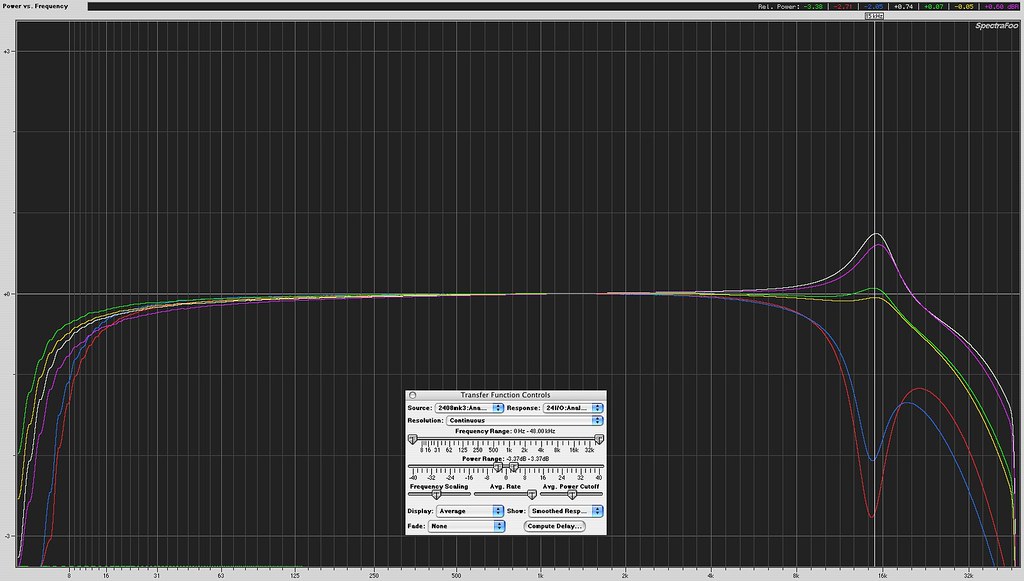Here's a great example of the kind of wacky stuff transformers will do if you aren't paying close attention. Yeah, yeah, they are just a middle man, converting one to another, blah blah blah. Look at this:

We see two examples of the same 15K:600 output transformer, measured three ways. All plots were checked for positive polarity.
The four plots showing a slight resonant boost would be a pair with 10K source, and a pair with 20K source, 10K source being flatter.
The two plots with the reversed notches show what happens when you run them backwards, driving the 600 ohm secondary as primary, and running the 15K primary into a high-Z load.
The resonance boost/notch has been addressed in other posts around here, apparently related to differences in each side of a hum bucking winding. I see it frequently in UTC and ADC transformers, and interestingly it usually goes away if you run the transformer fully balanced on both sides.

We see two examples of the same 15K:600 output transformer, measured three ways. All plots were checked for positive polarity.
The four plots showing a slight resonant boost would be a pair with 10K source, and a pair with 20K source, 10K source being flatter.
The two plots with the reversed notches show what happens when you run them backwards, driving the 600 ohm secondary as primary, and running the 15K primary into a high-Z load.
The resonance boost/notch has been addressed in other posts around here, apparently related to differences in each side of a hum bucking winding. I see it frequently in UTC and ADC transformers, and interestingly it usually goes away if you run the transformer fully balanced on both sides.


